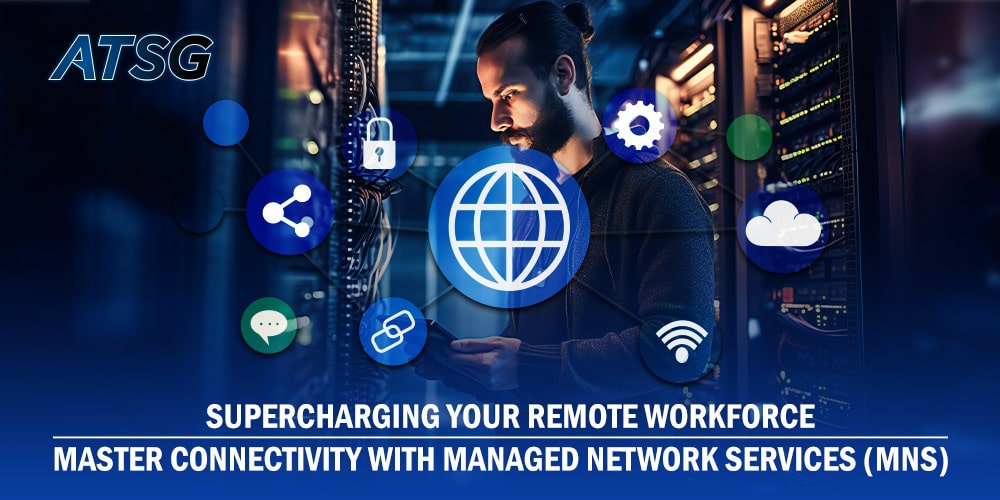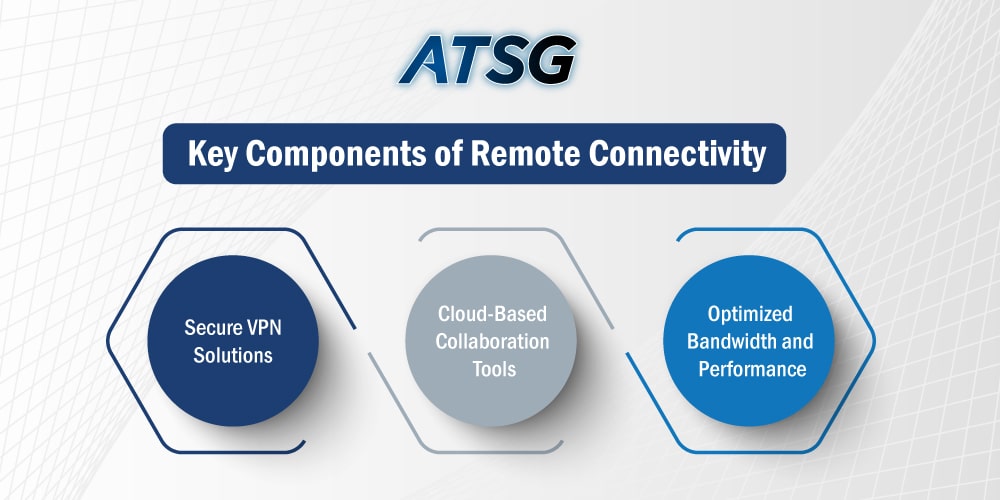In the current work landscape, remote work has become the new normal. Hybrid and remote employees are accessing organizational data and applications from various locations, using a wide range of devices. This puts your network to the test, as it needs to deliver a consistent and lag free experience to your workforce.
This underscores the importance of a well optimized and monitored network, which ensures seamless access to productivity tools, resources, data, applications, and more. Instead of managing the network themselves, organizations can leverage the expertise of specialized Managed Network Service (MNS) providers.
Yet, there is a silver lining in the form of Managed Network Services (MNS), which make tech and network related uncertainties a thing of the past. With managed network services at the helm, remote employees have a virtual support system that does not require an on-site tech expert’s intervention.

In this blog, we delve into the world of remote team connectivity, and explore how Managed Network Services (MNS) can be a game-changer in this landscape.
The Benefits of Managed Network Services (MNS)
Let’s start off by discussing the compelling benefits of MNS, and why embracing managed network services can prove pivotal for the success of businesses.
- Firstly, MNS ensures a seamless flow of information, by deploying robust infrastructure, optimizing collaboration tools, and minimizing network latency. This results in a workplace culture buzzing with enhanced teamwork, where productivity and innovation become second nature.
- In addition, MNS takes a vigilant approach to identify and “nip” potential issues “in the bud”, before they are able to wreak havoc on your IT infrastructure. This proactive stance ensures that everything is stable, and keeps the operational momentum rolling for remote teams.
- Cybersecurity is also something we cannot take for granted, especially in remote working environments. With MNS, we get secure VPN solutions, with data encryption and robust access controls. This safeguards sensitive information, and ensures strict compliance with data protection regulations.
- Another major benefit of deploying MNS is that it liberates your internal IT teams from the nitty-gritty of day-to-day network maintenance. This streamlined approach lets your IT experts channel their energies towards strategic initiatives, that propel the company forward – a win-win for everyone.
- Moreover, businesses can think of MNS as their growth partner. We say that because these solutions are not just designed to keep up; they instead thrive on scaling with your business ambitions. For instance, whether you need to expand remote teams, or dive into cutting-edge technologies, MNS can be your go-to, by ensuring seamless scalability, while keeping your network performance optimal.
Key Components of Remote Connectivity
During the global pandemic, IT teams worldwide were hit with the challenge of rapidly transitioning to remote work. Fast forward to 2024, and remote or hybrid work arrangements have pretty much become the new normal.
Here, a question arises as to how tech teams ensure their remote setups are working at optimal levels. Let’s dive into the effective components that can truly streamline your remote work environment.

-
Secure VPN Solutions
For modern enterprises, cybersecurity begins with proactive measures being taken by employers. They have to think beyond standard anti-virus software or internet surfing protocols. Here, utilizing secure Virtual Private Network (VPN) solutions is crucial for remote team connectivity. VPN adds an extra layer of resilience against cyber threats, by encrypting data and establishing secure connections.
-
Cloud-Based Collaboration Tools
Then, we have Cloud-based collaboration tools, that enable businesses to seamlessly collaborate from anywhere. With Cloud-native technologies, security teams are empowered to move faster, see more, and effectively manage the influx of endpoints and user data in the new hybrid work model. The adoption of Cloud-native tools, if done right, can prove to be a strategic move for businesses.
-
Optimized Bandwidth and Performance
Another key component of remote connectivity is how efficiently bandwidth allocation and performance monitoring tools facilitate seamless communication and network optimization. With MNS, businesses can rest easy, knowing that there will be effective utilization of resources, preventing bottlenecks and streamlining overall performance.
Maximizing Remote Team Collaboration
Although various methods exist to stay connected with remote workers, and foster collaboration among them, a common challenge is the absence of human element. Connecting over the internet can make it challenging to discern people’s emotions, and this might come in the way of effective team collaboration.
In the following points, we discuss ways to improve the collaboration aspect of remote work.
- An open feedback loop is always a good option, because it encourages a culture of continuous improvement within your employees. This transparency definitely has a positive impact on employees, motivating them further to innovate and be productive in remote work
- Moving on to the next key aspect of remote team collaboration – clear communication. With well-defined communication channels, coupled with regular check-ins and constructive feedback loops, teams definitely feel more connected and motivated.
- Shifting gears, the strategic use of right tools also has the ability to “make or break” team collaboration Be it video conferencing tools, or instant messaging and project management platforms, there needs to be a thoughtful and well-planned approach to bridging the gap between physically dispersed team members.
- Plus, in the absence of physical interactions, virtual team-building activities can play a crucial role in fostering cohesion, and a sense of belonging. These activities contribute to a positive team culture, even in a remote setting.
- Finally, we circle back to the human element. Regular check-ins and virtual social gatherings prove instrumental in creating a sense of community among remote teams. Such engaging activities usually result in higher employee satisfaction, and strengthen the bond within the team.
Final Thoughts
Remote work is definitely a lasting shift, and it is not going away anytime soon. So, it is better for businesses to embrace change, and adapt their strategies accordingly, enabling them to better support distributed workforces.
In this transformative landscape, Managed Network Services (MNS) play a crucial role, ensuring seamless connectivity, robust security, and efficient communication for remote teams.
One notable technology partner that can help in meeting these demands is ATSG, a reputable and reliable global provider of Managed Network Services (MNS). Our MNS capabilities are delivered through the highly intelligent ATSG OPTX™ Platform, a revolutionary solution for proactive network monitoring and management.
The ATSG OPTX™ Platform leverages AIOps (Artificial Intelligence for IT Operations), to bring an intelligent and automated approach to network operations. Our platform is also capable of Root Cause Analysis (RCA), offering a comprehensive understanding of any underlying issues that could be inhibiting network performance.
Business Impact Monitoring (BIM) is another distinguishing capability of the ATSG OPTX™ platform. This feature allows businesses to assess the impact of network issues on overall operations, and prioritize those aspects of the network which are vital to support mission critical workloads.
Notably, ATSG has been recognized as a Leader in the 2023 Gartner® Magic Quadrant™ for Managed Network Services (MNS). We believe this is a huge achievement, and underscores ATSG’s commitment to delivering nothing short of exceptional network management solutions.
So, for enterprises seeking a trusted technology partner in supporting their IT infrastructure or remote workforce needs, ATSG is there to help. Our diversified portfolio spans across industry leading Managed IT Services, Technology, Cloud Computing and Cybersecurity solutions for enterprises.




